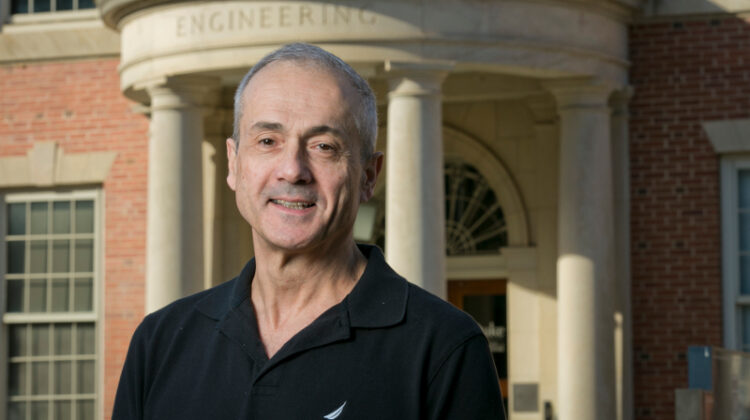
A Duke University mechanical engineering professor has suggested that the pursuit of perfection can end up being the enemy of good design because it restricts the range of options available to designers.
Engineers are often trained to seek out the best solution to a given problem. When designing a turbojet engine, for example, this might mean tweaking the rotor blades’ angles a tiny degree to achieve a tenth of a per cent increase in efficiency. Or it might involve drawing a graph to find a function’s minimum or maximum point.
Adrian Bejan (pictured above), the JA Jones distinguished professor of mechanical engineering at Duke University, was busy demonstrating this idea to a class full of students when a thought struck him: this is not how nature operates. Evolution is a sequence of design changes that happen on their own in a discernible direction; it never weds itself to a single point on a drawing board. An evolving system or animal is free to simply go with what works. Not to such a degree that its performance suffers significantly, but enough that it opens access to other options close to the so-called optimal design.
With engineering often looking to nature for clues to solve challenges, Bejan wondered if he might look the opposite way – to predict nature before looking at it. If problem solvers and builders were free to miss the absolute highest mark, how much greater might be the range of designs they consider plausible? Using two relatively simple examples – walkways ferrying passengers off a train and a bird flapping its wings – he discovered that the answer is, quite a lot greater.
‘In engineering, design, theatre, architecture or even the organisation of this university, any form of design benefits from the ability to make good but imperfect decisions and the freedom to move on and contemplate other opportunities for improvement,’ Bejan said. ‘If one is wedded to the idea of the absolute best, nothing new will ever be created.’
Bejan first looked at the example of passengers arriving by train and walking across a room with many exit points. With the total area of the room remaining constant but the length and width of the room free to change, he solved for the optimal shape of the room to get all passengers where they’re going the quickest. With the solution equations in hand, he showed that providing even one per cent wiggle room for imperfection away from the best performance opens the design space by 28 per cent.
In his second example, Bejan looked at the flapping motion of birds at nearly constant altitude and speed. Considering the various forces involved – drag during gliding, lift created by wing size, speed and body size, among others – he formulated an equation for the rhythm of wings needed to maintain constant speed with minimum effort. While an optimal answer does exist, Bejan once again showed that allowing for just one per cent imperfection above the theoretical minimum effort opened the design space by 20 per cent.
Bejan said that he chose these examples because they involved changing only a single variable, a single degree of freedom – the shape for a room or the flapping rhythm for a wing. In more complex examples that involve many variables, these tiny tolerances for imperfection create an even wider range of ‘good enough’ solutions.
Hence, by focusing less on finding absolute optimal designs, engineers and designers are free to iteratively move towards entirely new design concepts that wouldn’t otherwise have been within their sight. It also gives designs, methods and entire fields of study the ability to adapt to a changing world.
‘The doctrine of chasing the best design is not helpful,’ Bejan said. ‘The teaching of science should go hand-in-hand with the freedom to take a shot, hit the vicinity of the mark and move on. The end goal isn’t just to hit a bullseye, but to keep more arrows in your quiver to keep taking shots over a long period of time.’
The research has been published in Biosystems.



